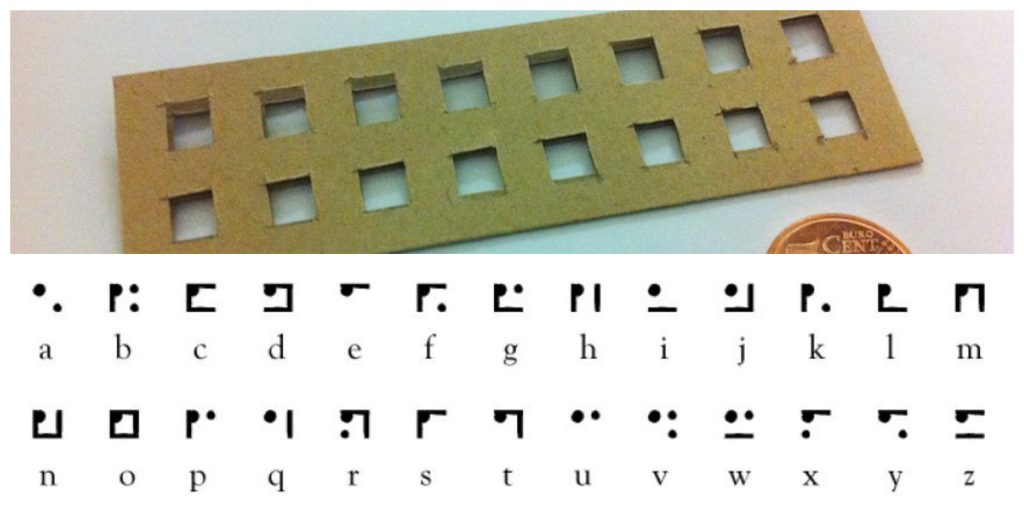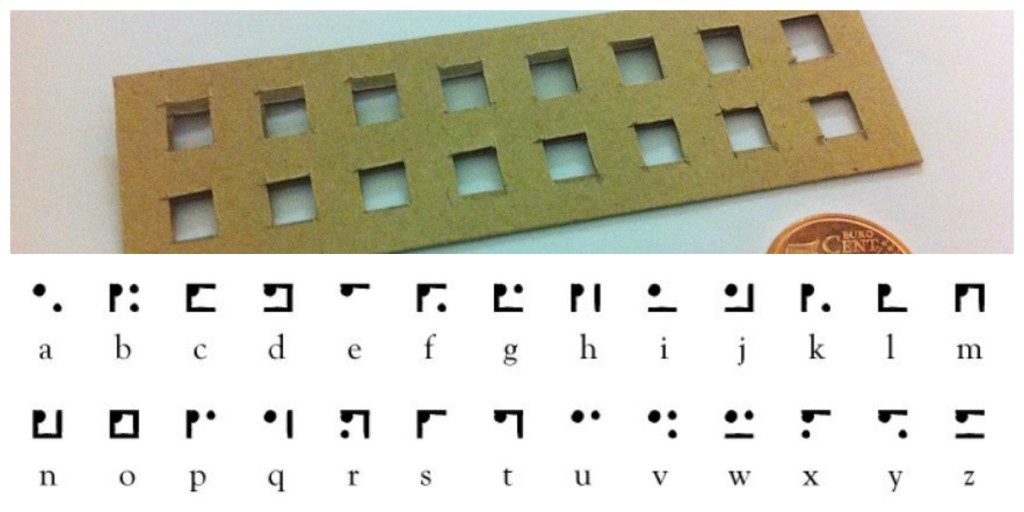Writers will do anything to get out of writing (trust us, this is hard work). Some avoid a blank page or fend off writer’s block by going to the trouble of inventing something.
Lewis Carroll’s Nyctograph
Today, writers struck by late-night inspiration in bed can simply reach for their smartphone, and open up a note-taking app. But before the nifty invention that is modern electricity, writers had a heck of a time jotting down those revelations. By the time one had gotten out of bed, found matches for a candle, and dipped a quill in ink, the idea was…gone. In 1891, Alice’s Adventures in Wonderland author Lewis Carroll (real name: Charles Dodgson) conceived a system that would enable him to write a quick note in bed without the aid of light. It doesn’t sound like it’s simpler than finding a candle and a quill, though: Carroll’s Nyctograph consisted of two rows of eight boxes cut out of thick cardstock. Then he developed and memorized a complicated code compiled of dashes and dots to mimic the alphabet, using the boxes as a guide.
Roald Dahl’s Heart Valve
If necessity is the mother of invention, there’s nothing more necessary to a parent than healing a sick child. After James and the Giant Peach author Roald Dahl’s son, Theo, was in a car accident that left him with water on the brain, Dahl, with the help of an engineer named Stanley Wade and Theo’s neurosurgeon, Kenneth Till, developed a valve that allowed the excess fluid to safely drain out of brain. The cerebral shunt was named the Wade-Dahl-Till valve and was used in thousands of operations in the 1960s before newer devices rendered it obsolete.
Margaret Atwood’s Longpen
Writers are often reclusive, so it’s no surprise that the Longpen was conceived by an author in in the middle of a long and dreary book tour. Developed in 2004 by Canadian novelist Margaret Atwood (The Handmaid’s Tale), it allows a writer to remotely sign books via a robotic arm and video conferencing. Atwood claims that the device provides fans the “one-on-one” experience that they want out of a book signing, while the author, is in turn, able to stay nice and cozy in their home, presumably surrounded by cats and half empty cups of tea.









